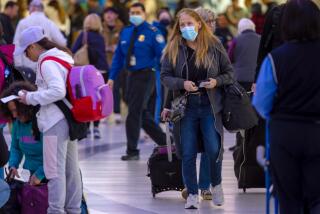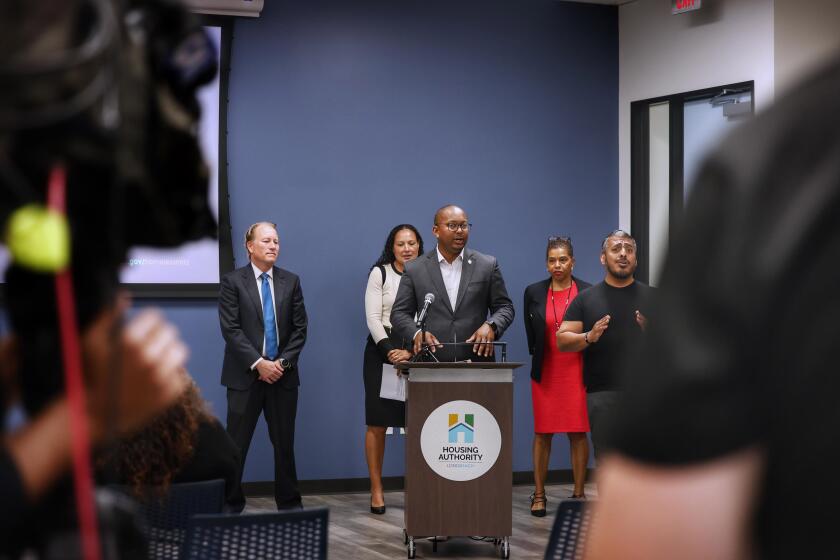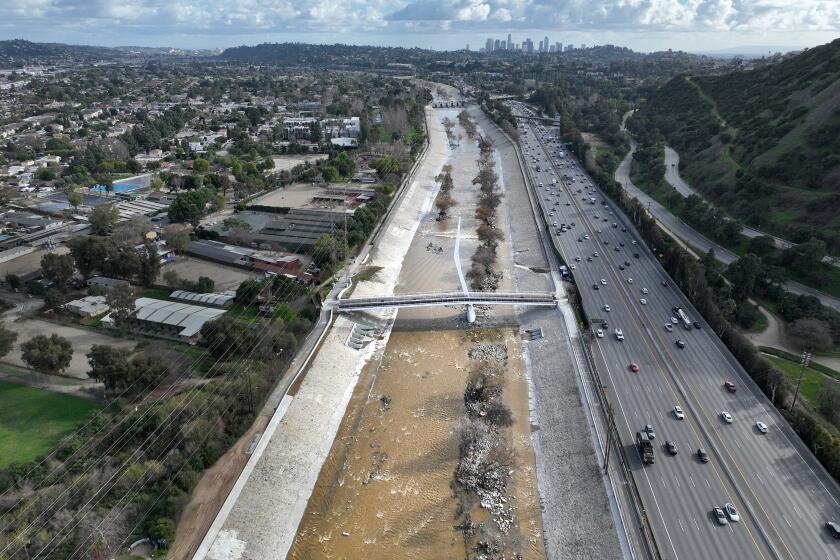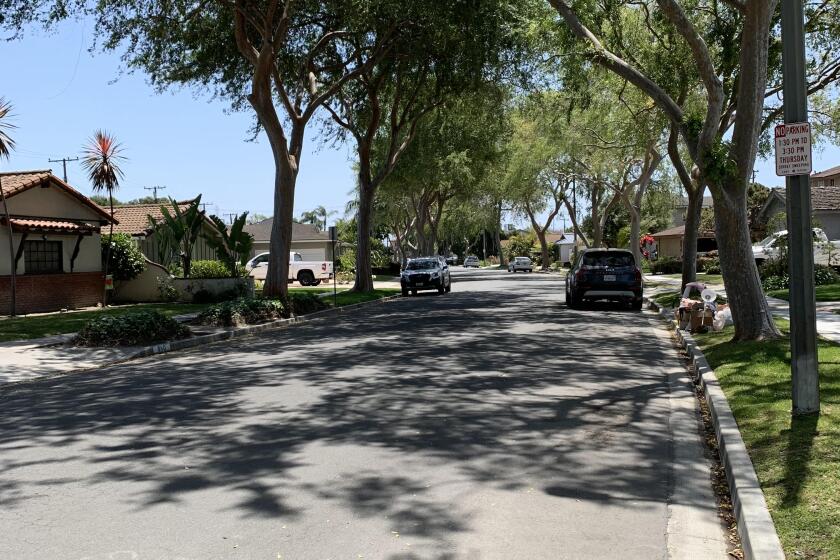Yucca Mt.’s neighbors speak out from Lone Pine
Henry Williams, a Paiute from Bishop, drove an hour south to a meeting hall to deliver his tribe’s verdict on the contested federal plan to bury nuclear waste inside Nevada’s Yucca Mountain, about 16 miles from the California border.
“I am here to speak for my Paiute family,” he told a public hearing last week held by the federal government. “We have been here for thousands of years. Our spirits in this area are totally against this.”
The federal plan to bury nuclear waste at a dump in Yucca Mountain has encountered one setback after another in the courts. It is hated in much of the West. It looks like it is in deep political trouble in Congress. And a number of presidential candidates have attacked the dump.
But the wheels of the Energy Department bureaucracy are still going through the exacting legal steps to get a license for Yucca Mountain, where it wants to bury 70 metric tons of spent commercial fuel and nuclear weapons waste.
In the last week, the department has held a series of public hearings on two environmental impact statements, a process required under federal law.
At the hearing in Hawthorne, Nev., only four locals showed up, greeted by 30 or so federal employees and contractors bused in from Las Vegas. About 55 people appeared for a meeting in Reno. Bigger turnouts are expected in Las Vegas on Monday and in Washington, D.C., on Wednesday.
The only hearing in California was held Thursday in Lone Pine, part of Inyo County, whose eastern border can be seen from the crest of Yucca Mountain. A few dozen locals showed up, including a book publisher, several Native Americans, some retirees, a few anti-nuclear activists and a lot of people in cowboy boots and worn blue jeans.
“We are putting a burden on future generations to watch and care for this waste longer than man has been on this Earth,” said Roger Rasche, a retired proofreader from Lone Pine. “I hope future generations will be forgiving. The best place for the nuclear waste would be under Washington, D.C., because any accident would be less devastating to the environment.”
Asked about public opposition against the dump, Edward F. Sproat, the Energy Department’s director of civilian radioactive waste management, said in an interview: “I wouldn’t expect anything less. This program has been around a long time, and it has a lot of history.”
Government scientists insist that there is no chance radioactivity could leak for 10,000 years and that the dump will be safe for hundreds of thousands of years after that.
The hearing also focused on another aspect of the plan: getting the waste to the dump.
The plan calls for 13,600 truck and rail shipments of waste, about 12% of which would probably move through California. The majority would come from out of state, largely via Interstate 40 and then up the steep Cajon Pass in San Bernardino, either on rail or by truck.
Wynne Benti, who publishes books in Bishop, said the environmental impact statements, one for the dump and one for a rail transportation plan, failed to adequately assess the risk of accidents in transportation or the government’s ability to respond: “Recent experience shows -- from the collapse of a bridge in downtown Minneapolis to a barge dumping oil into the San Francisco Bay -- that federal and local agencies’ ability to coordinate and quickly deal with the aftermath of large-scale accidents have been wrought with delays in communication and immediate, critical action.”
David Weisman of the Alliance for Nuclear Responsibility said the Energy Department also had failed to explain who would pay for emergency training and equipment along those rail and truck lines.
The group alleges that the Energy Department held the hearing in remote Lone Pine to discourage a larger turnout. Not so, said Energy officials. Lone Pine was chosen because it is part of Inyo County, an AULG, or affected unit of local government, they said.
According to the plan, once the waste gets to Yucca Mountain, it will be transferred to special 18-foot-long alloy canisters inside a series of large facilities built to handle highly radioactive waste. Then, the canisters are to be placed in tunnels about 1,000 feet underground; the water table is about 2,000 feet from the surface. There the waste will decay harmlessly for hundreds of thousands of years, according to the government.
But, Inyo County Supervisor Richard Cervantes testified Thursday, any leakage would flow downhill in the direction of Furnace Creek, 80 feet below sea level in Death Valley National Park. The county says it wants better assessments of the risk to aquifers that feed into the park.
A number of other speakers said the mere existence of the dump would harm local tourism.
Though the process of licensing Yucca Mountain will take into account reasonable scientific issues, it is not set up to argue about the very concept of the dump, Sproat said.
The department intends to file its application for a license next year.
A new administration will be in place in Washington in about 13 months, and whether it will support the project is unknown.
Nonetheless, Sproat said of suggestions that the waste be left in place for a century until technology could deal with it: “I think it is ethically wrong. The current and past generations that created this spent fuel are the ones who should determine what to do with it.”
At least a couple speakers in Lone Pine were on Sproat’s side.
“You people are exaggerating the problems here,” said John Goit, who said he had moved nuclear bombs in his days in the military. “I am in full support of this site.”
More to Read
Start your day right
Sign up for Essential California for news, features and recommendations from the L.A. Times and beyond in your inbox six days a week.
You may occasionally receive promotional content from the Los Angeles Times.







